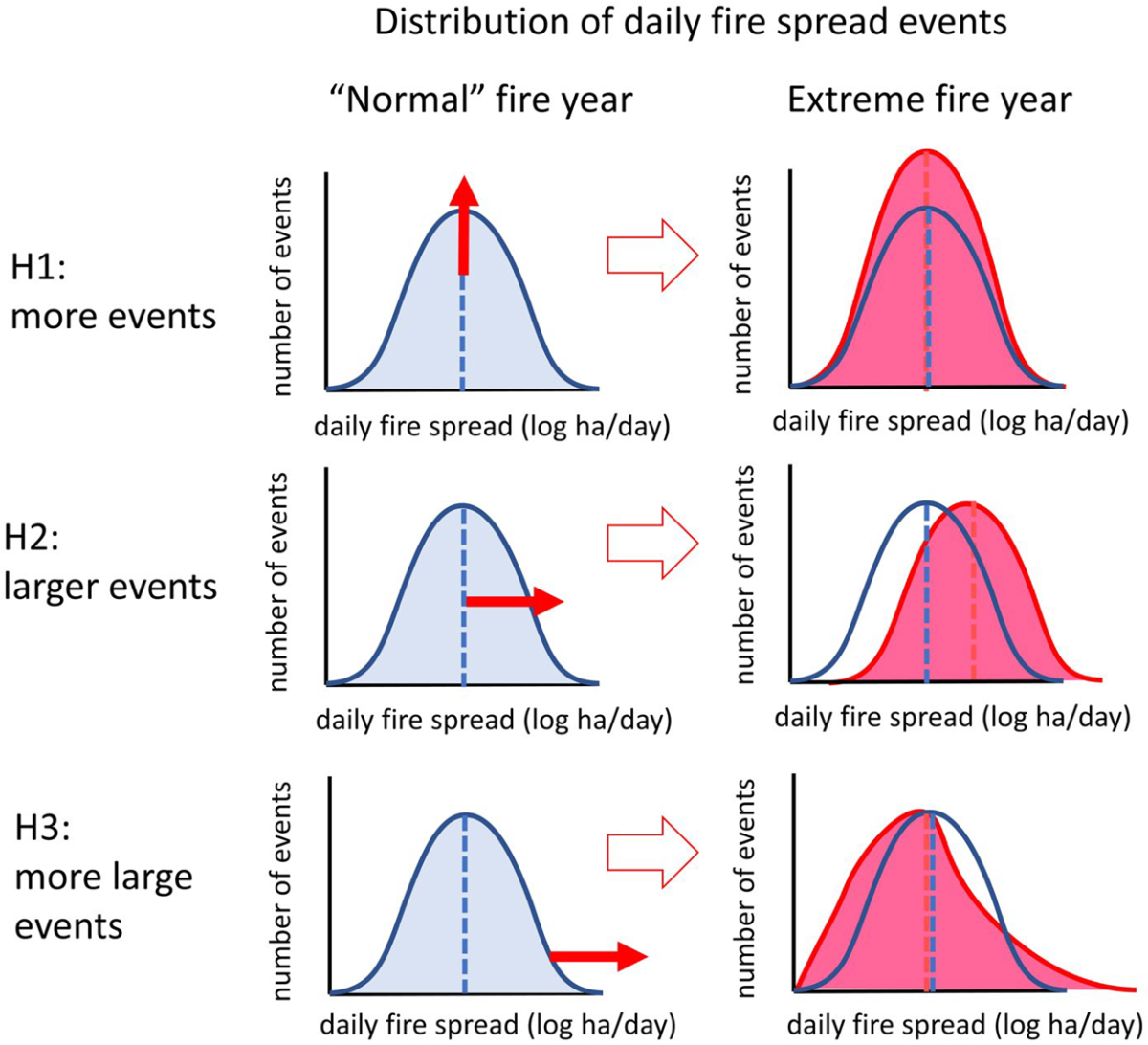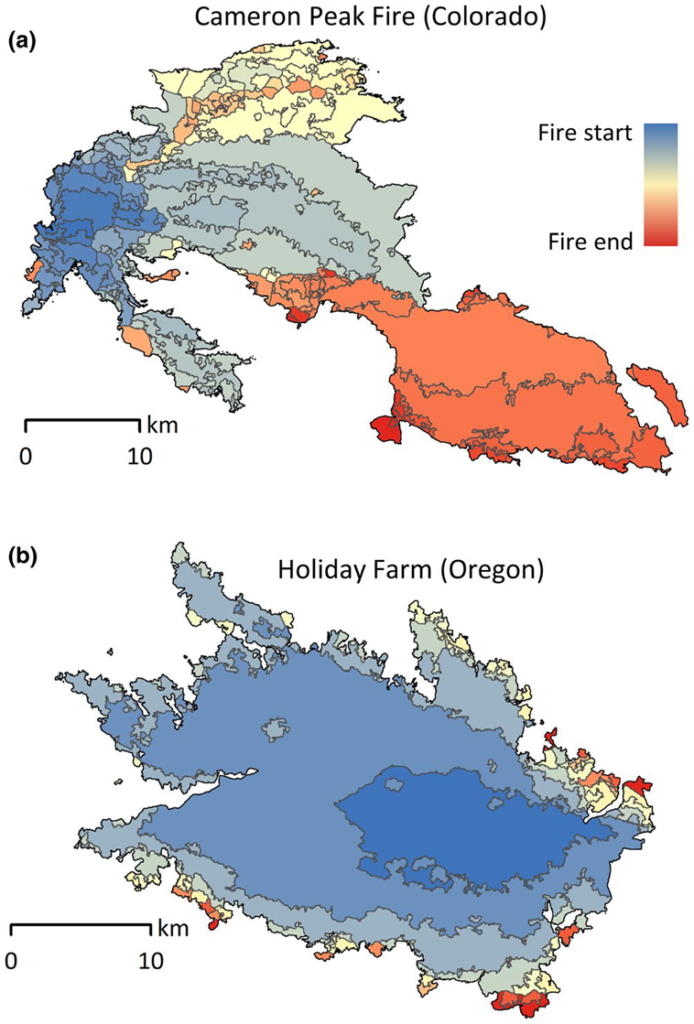Bad outlook for our next El Niño fire season

Global Ecology and Biogeography journal article forecasts that extreme/widespread fire events under 2 °C will likely exceed anything yet seen

by Coop et al., 19/03/2022 in Global Ecology and Biogeography
Extreme fire spread events and area burned under recent and future climate in the western USA
Results: Extreme single-day fire spread events >1,100 ha (the top 16%, >1 SD) accounted for 70% of the cumulative area burned over the period of analysis. The variation in annual area burned was closely tied to the number and mean size of spread events and distributional skewness towards more large events. For example, we identified 441 extreme events in 2020 that together burned 2.2 million ha across our study area, in contrast to an average of 168 per year that burned 0.5 million ha annually between 2002 and 2019. Fire season climate variables were correlated with the annual number of extreme events and area burned. Our models predicted that the annual number of extreme fire spread events more than double under a 2°C warming scenario, with an attendant doubling in the area burned.
Read the complete article….
Conclusions: Exceptional fire seasons like 2020 will become more likely, and wildfire activity under future extremes is predicted to exceed anything yet witnessed. Safeguarding human communities and supporting resilient ecosystems will require new lines of scientific inquiry, new land management approaches and accelerated climate mitigation efforts.
Featured Image: Hypothetical distribution of daily fire spread events during normal and extreme fire years. Increases in the annual area burned could potentially be accounted for by more fire spread events (number), larger event size (mean) and/or more large events (right skewness) / From the article